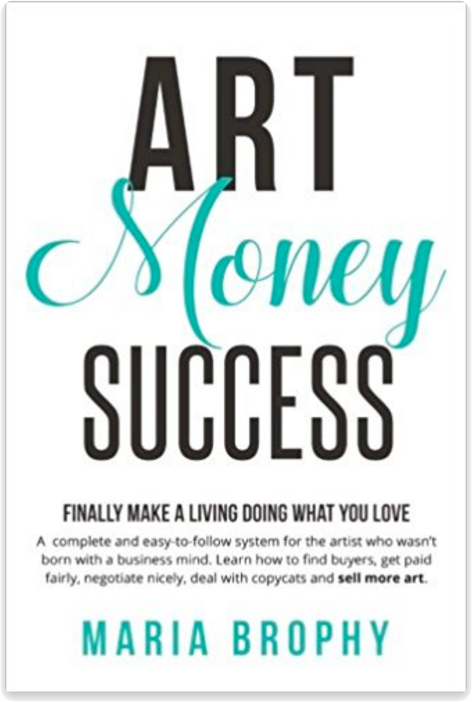
I’ve always said that you create your own lucky breaks. There is no such thing as an overnight success.
That is, until last night when I met Hawaiian photographer Clark Little.
And I realized that maybe there is an exception to this rule; maybe there are lucky breaks.
But there’s a caveat to that: You have to act when you get lucky, in order to become an overnight success.
You have to jump on the opportunities, or they’ll pass you by. And Clark Little’s story proves this point for me.
Many people get lucky breaks, but they are too busy to notice, too tired to say yes, or they don’t believe in themselves enough to commit. These same people might have experienced overnight success, too, if only they had recognized the lucky break when it came to them.
Clark Little has found quick, international success for his shorebreak photo art. His works are the most talked about ocean photography in surf history and he’s been featured on numerous T.V. shows including Good Morning America and The Today Show.
All this attention is making other photographers in his field angry.
They’re mad because Clark Little has only been working at his art a few short years, and many of the ocean photographers who have similar work have been doing it for decades. But no-one knows they exist, and this new guy Clark Little is an international phenonmena.
When I first learned of Clark Little’s quick success, I was intrigued. “He must have an incredible P.R. person on staff,” I thought. Or maybe his wife was a marketing genius. Yes, his work is good, but it takes ten years or more to get this kind of recognition.
Being the analyzer that I am of success stories, I just had to find this out: What makes Clark Little so special?
I went to Clark’s book signing at the Surfing Heritage Gallery in South Coast Plaza (which just happens to exhibit my husband, Drew Brophy’s art, as well). When Drew and I arrived, there was a line of people clamoring to buy his $100.00 book!
I watched as Clark took the time to talk to each and every person who was there. And when I finally reached the front of the line and questioned him about his overnight success, he had no problem telling me everything I wanted to know.
Here’s How Clark Little found overnight success (and it’s a good lesson to all of us):
HIS STORY
Everyone loves a good story, especially the media. Clark’s personal story is unique and interesting. The short version is that a few years ago Clark’s wife asked him to take a nice photograph of a wave for her. His photo was so good, that he invested in camera equipment and committed to the art of photography.
HE KEPT SAYING YES
I asked Clark how it was that I was reading about him in magazines, online, in newspapers and just about everywhere else. Did he have a P.R. person? The answer was no.
Clark said that in 2007 he was asked to exhibit his works at an establishment in Waikiki. He said yes.
During that exhibit, a few other offers to exhibit his work in other locations came his way. He said yes.
Someone he had never heard of in the U.K. asked Clark to e-mail them images to post on their website. He said yes. (He didn’t find out until later that this particular website had millions of readers) *Note: This is where most artists would say NO – because they are wary of sending images via e-mail.
From that website posting, he got numerous phone calls from media people wanting to interview him. He said yes.
The Today Show wanted him their show. He said yes.
People started asking him to give slideshows of his work at various venues. He said yes.
Someone suggested he do a nice, big, coffee table book of his art. He said yes.
Companies offered to fly him all over the country to give his slide shows in other parts of the world. He just kept saying yes.
HE COMMITTED 100%
Clark had worked a government job for seventeen years, complete with all the benefits of a steady paycheck and health insurance. He came to a crossroads when he saw that he could possibly make a living with his photography full time. It was a hard decision to make, but he left his secure job during the worst economy of our lifetime to pursue this new venture. I asked him if he regretted that decision. Before he opened his mouth, his beaming smile answered my question. He told me that it was the best decision he’s ever made.
HE’S A GREAT COMMUNICATOR
Clark’s a guy that you feel comfortable talking to. He’s warm and friendly and unassuming. He’s generous with his time and his information.
I pointed out to him that from an outsider’s view, he appears to have reached an enormous level of success. He laughed, “Yeah, my wife and I talk about how everyone thinks I’m a millionaire now. But that’s far from the truth!”
He’s honest like that. And you can’t help but love him. And if you love him, you’ll buy his book and his prints. Yes, it works that way.
WHAT CAN WE LEARN FROM CLARK LITTLE?
Clark’s overnight success story is a puzzle made up of many pieces that he’s put together nicely.
He was thrown some lucky opportunities and acted on them by saying “yes”. He made the decision to commit 100% to his art of photography. He tells his personal story in a genuine manner. He’s a great communicator. And he’s a nice guy.
What I would suggest to all the long-time photographers out there who are mad that they haven’t found this level of success: Don’t get mad. See this as a road map to follow for your own success. And get marketing.
Maria xxoo










21 Responses
Great story! I’ve been thinking about jealousy/anger too. Actually, I tweeted about it today! To, err, quote myself “Feeling jealous? Use jealousy to show you want you want–add it to your to-do list! I am.”
Earlier today I was reading about a young artist sponsored by a fancy company… I got those “grrr” feelings. Luckily I caught it in time and didn’t fall into a hole of low self-confidence. I objectively looked at it as a clue of what direction I can go. Now I can align myself towards that goal and be proactive. Retrospectively, I can say that I actually was lucky to have a pang of jealousy!
Thanks for honestly sharing your feelings on this, Aileen! I think we all struggle with this – we think we’ve earned it, and then we see someone “new” get it….. but I think your approach is a good lesson – to push ourselves towards that goal that we see someone else has reached.
Maria..You’re writing is getting better and better…Loved the article and energy of the piece.
Clark’s work and success is certainly inspiring on a multitude of levels.
Good for him ! It shows that the success energy is still out there in full force! 🙂
PS: How’d you get your blog to show up so darn neatly on an iphone?
I’m flattered – thanks!
PS: Joe Botha, the website guru you introduced me to, is the one who made all this work so well!
Loved this article. What an inspiration!
I’ve retweeted and put it on my Facebook pages.
Hey Maria,
Been meaning to call you about this. Wanted to get the scoop on your meeting with Clark Little. Your great article answered all my questions. Bummed I couldn’t make it to the book signing.
Mike
Yes, yes and YES! Keep it coming M. 🙂
Thanks for sharing. Your post is a useful contribuiton.
this story is awesome!!!!i took your insight and just put it to work!a friend of mine got me a spot in a waikiki gallery.i just said “yes”.hours of work on a monolithic aquatic beach scene.3 d hand carved old board.and put ii into a box and wave goodbye.put it out there!!!YES
thanks again
hey jay.whats up!!!
Ronnie, congratulations on getting into a gallery in Waikiki! That’s awesome. I hear that art is moving better in Hawaii than just about anywhere else, so you’re in a good place.
Thanks for commenting on my blog posts and I’m glad that you are enjoying them!
Ronnie! Whats up man!! Stoked you’re vibed in with Maria’s blog!! Hope to se you at the Costa Mesa Event on Dec 18th? Drew,Maria and I will be there…
Maria- you should check out Ronnie’s work if you dont know it…it’s siiick–>http://carvinart.com/
hey jaygood luck out west!!!thanks for the good word!geta couple waves for me!!!keeping it positive!
ronnie
While I too am quite skeptical about doing things, mostly in regards to others stealing my art etc. I suppose I do hold back sometimes and perhaps missed out on a good opportunity. Tho usually if it seems a really good market, why not go for it. Sometimes too, what seems too good to be true often is.
However for instance, I’m supposed to do work for a mega rock star in Costa Rica! How cool is that. Still skeptical but, hey that’s a chance worth taking. At least I think. Plus I’ll make sure I get things established to make sure it’s gonna go smoothly.
I’d also like to mention that I like to always watermark my art with my name/ website across it. Yet it’s gaudy perhaps and, there’ ways one may get around it. Which is certainly why a lower resolution is best. However one good advantage is that if people copy and paste my art, my name is gonna be seen that much more. Being seen is the name of the game.
DennisPanzik.com
Dennis, thanks for your thoughts on this.
With regards to the watermark – I don’t feel this is necessary. I think if you’re a photographer, it’s a good idea to include your name somewhere on it, at the bottom. It’s not a bad thing to have people love your work so much that they “borrow” it and pass it around to others.
Particularly bloggers, who like to “grab” images for their blogs (like I do) and they give photo credit and links to the artist/photographer. This only gets you free marketing and new fans.
So don’t make it hard for people to share your images and your name. It’ll work out in your favor!
Good luck on the Costa Rica thing. I would only suggest that you get travel covered by them in advance, as well as deposits upfront before doing any work. That way, there’s nothing to worry about.
Thanks for reading!
As for watermarking your art, I think it is a good idea cuz everyone wants to borrow it. I’ve already seen where others steal someone’s work and claim it as their own. Why, I don’t know. But it’s kind of like locking your doors. It may only keep the people more honest.
It seems often enough that when someone borrows it, they crop off the artist name at the bottom. That’s why I put it right on it. My clients can take pictures and post where they like, (hopefully giving me credit), but from my advertising standpoint, I want my name seen. So I say YES.
Dennis, you’ve convinced me on this – I see that for photographers, it could be easy for someone to take your image and call it yours. So, maybe a watermark is a good idea in your case.
A tool that many artists and writers use on their websites is a Creative Commons license (I have one at the bottom of my site) where you make notice on your website that your images or your content is owned by you, but you give permission for it to to be used online for non-commercial use, and that you must be given credit and links back. (The benefit to me is if someone wants to quote me or use some part of what I’ve written, then they credit me in their blog post and link back to my site.)
With the Creative Commons license, you are encouraging people to share your content with others for non-commercial use (they can’t make money off of it, but they can share your content because they think it’s cool, interesting, wonderful, etc.), and at the same time, traffic is driven to your site from theirs.
I think I’ll write a post on this soon. Thanks, again, for your passionate comments!
I enjoyed this story. Yes!
For those watermarking their art, bear in mind, there is no original anymore. Once you put it out there, It belongs to everyone. This is life in the digital age and it is the same with music.
I believe Clarke Little’s success is due to his attitude to life, he is open, friendly, kind, sharing and it seems a lover of life. This is an example that what you give out in life (without expectation of something for yourself) is returned to you manyfold.
Cheers,
Christine
Australia
What I find interesting in this story is that people kept coming to him and asking…it seemed he made little effort for people to come to him. For people to say, “Show your stuff with us for free…” or “we’ll fly you all over the world at our expense” is very rare.
For myself, I get people asking me to pay them to advertise for me…. “hey, pay me $2500 for a tiny add in a magazine that isn’t popular”….or “we invite you to our exhibition…for $5000″….”interested in being featured? thousands of dollars please…”
This story doesn’t seem to have this issue. I for one, cannot afford that kind of advertising and “exposure”. Saying yes to people who want to support you for free is easy….but it seems to be rare.
I hear you. This article was written 10 years ago and a lot has changed since the recession. I’ve noticed things that used to be free aren’t anymore, and people have become obsessed with monetizing everything. EVERYTHING. I think the message of this article, tho, is to say “yes” to opportunities that make sense for you and be your genuine self, even if you don’t get paid up front. I wouldn’t (and couldn’t afford to) pay a gallery or magazine to show my work, for instance. But if someone asked me to hang my art on the walls of a local brewery with no promise of sales, I would for a set time, simply for the exposure. (I’d also have the brewery sign an agreement to pay for any damages that might occur, like fire or vandalism, that they can run through their business insurance…because saying “yes” doesn’t mean “enter into it blindly!”)